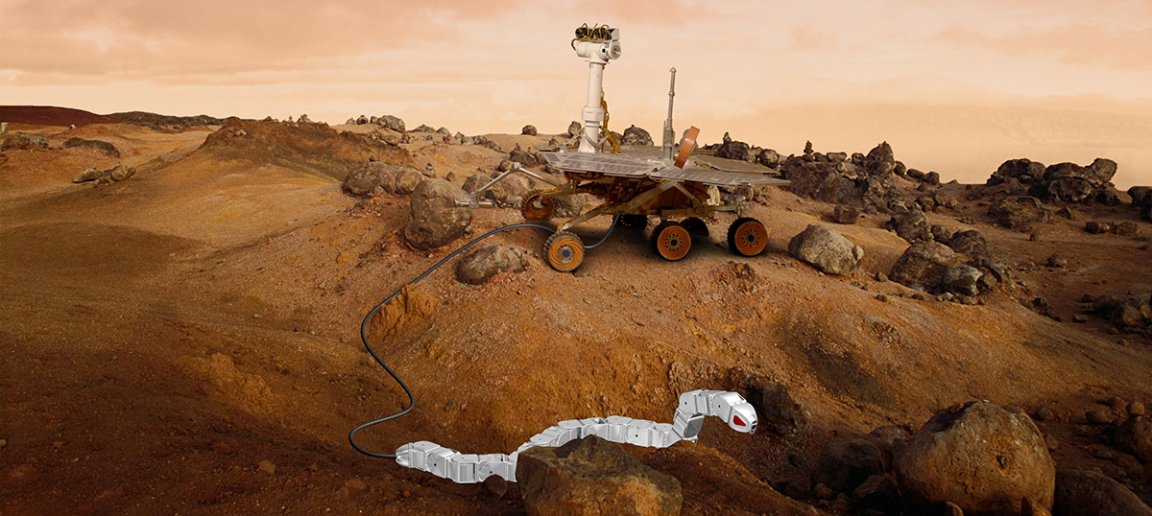
Snake-like Space Explorers
In order to remedy the lack of mobility and dexterity of larger space rovers, the building of Serpentine Robots for Planetary Exploration (SERPEX), which were originally proposed by the Foundation for Scientific and Industrial ResearchhasNTEF), have now been commissioned by the European Space Agency. The research team responsible for these robots is a collaboration between SINTEF, the Centre for Interdisciplinary Research in Space, and the Norwegian Space Centre.
The most likely short term application for such a robot would be helping astronauts to carry out inspections and repairs on spacecraft and structures like the International Space Station. Aksel Andreas Transeth, a Senior Research Scientist on the project, said in a press statement that “a snake robot could creep behind the sections, carry out an inspection, and perhaps even perform small maintenance tasks.”
Longer term goals include allowing teams to explore places on planets, moons, and comets that traditional six-wheeled craft could not by acting as a detachable arm capable of being operated autonomously. This would allow us to gain a new perspective on the small, hard-to-reach locations and difficult terrains of martian worlds.
Most excitingly, these robots could allow researchers to inspect tunnels beneath planets for habitability, which is crucial for the potential colonization of other planets. If we adapted to live underground, we would be provided a natural barrier against radiation, comets, and solar rays. The idea has already been linked to the European Space Agency’s proposed Moon Village.

Of the first snake robots, a concept robot, called the Wheeko Robot has already been developed. It has impressive dexterity and mobility due to to its “10 identical joint modules, each having two motorized degrees of freedom,” that are covered with small wheels that “enable the robot to slither forward over flat surfaces.”
What Our Current Rovers Have Done
SERPEX could be another weapon in our cosmic investigation arsenal, giving us a new way to explore our Universe. We have so far learned an incredible amount about planets such as Mars by, in part, launching land-based exploration vehicles like the Pathfinder and Sojourner in 1997, Spirit and Opportunity in 2003, and Curiosity in 2012. But these missions have been limited by the terrain that the craft can explore. One example: the Spirit Rover’s mission was ended when it got stuck in the mud in 2010.
If SERPEX turns out to be as useful as hoped, however, it will only give us answers to one piece of a much larger planetary puzzle. It will have to be used alongside vehicles such as NASA’s Mars Atmosphere and Volatile Evolution Mission (MAVEN) which provides information on Mars’ atmosphere, and the upcoming InSight mission, which aims to burrow down into the planet’s surface rather than just exploring its small spaces.
We are living in the golden age of space exploration, with more missions and initiatives planned than ever before. The information we have gathered up to this point on our Solar System with fairly rudimentary exploration tools has been weird, wonderful, and fascinating.
Ideas such as SERPEX are pivotal if we are going to become more proficient in space travel and exploration. And, now that the possibility colonizing Mars is looking more and more plausible, anything that adds to our database of knowledge will aid our entire species.